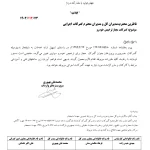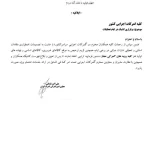Customs calculations are one of the most important steps in the process of importing and exporting goods. These calculations involve determining the costs, duties, and taxes associated with clearing goods through customs. In this article, we will explore the basic concepts of customs calculations, factors influencing them, and how to calculate the costs.
Basic Concepts of Customs Calculations
Customs calculations consist of several key elements, each of which, either individually or in combination with other factors, determines the final cost of clearing goods. These elements include:
Customs Value: The value of the goods, including transportation costs, insurance, and other related expenses up to the destination country’s border.
Customs Duty: A percentage of the customs value collected as customs duties.
Customs duties include the CIF value (Cost, Insurance, and Freight), which is the invoice value in local currency plus insurance and freight costs. This amount is multiplied by the tariff rate to calculate the customs duty.
Customs Duty = CIF Value × Tariff Rate
Value-Added Tax (VAT): A tax calculated based on the value of the goods plus customs duties.
To calculate VAT, first add the CIF value and customs duty, then multiply the total by 10%.
VAT = (CIF Value + Customs Duty) × 0.10
Commercial Profit: In some cases, commercial profit is also added to customs costs.
Factors Influencing Customs Calculations
Several factors influence customs calculations, some of the most important of which include:
Type of Goods: Each product, depending on its type and classification, is subject to different customs duties and taxes.
Country of Origin: Trade agreements between countries can lead to a reduction or increase in customs duties.
Customs Regulations: Domestic and international laws can impact customs calculations.
Exchange Rate: The exchange rate at the time of clearing goods can affect the customs value and, consequently, customs costs.

How to Calculate Customs Costs
To calculate customs costs, follow these steps:
- Determine the Customs Value: Calculate the value of the goods, including transportation and insurance costs.
- Calculate Customs Duty for the Red Crescent Society: For customs duty calculations for the Red Crescent Society, 0.5% of the customs duty is taken.
Red Crescent Customs Duty = Customs Duty × 0.005
- Calculate VAT: Calculate VAT based on the sum of the customs value and customs duty.
- Add Commercial Profit (if applicable): If the goods are subject to commercial profit, add it to the costs.
- Total Customs Duties and Fees: Finally, customs duties and fees include the sum of customs duty, VAT, and Red Crescent fees.
Customs Duties and Fees = Customs Duty + VAT + Red Crescent Fees
Important Tips for Customs Calculations
Accurate Documentation: Providing precise and complete documentation to customs can prevent errors in calculations.
Review Tariffs: Being aware of customs tariffs and their changes can help reduce costs.
Use Customs Experts: If needed, consult customs experts for accurate calculations.
Customs Calculation Tools
Today, there are online tools and customs calculation software that can help you perform accurate and quick calculations. These tools are usually updated based on the latest tariffs and customs regulations.
Conclusion
Customs calculations are a critical step in the process of importing and exporting goods. Understanding the basic concepts, influencing factors, and how to calculate customs costs can help you optimize your expenses and avoid issues in clearing goods. By using modern tools and consulting experts, you can manage this process efficiently and accurately.
Frequently Asked Questions
Q: Are all goods subject to customs duties?
A: No, some goods may be exempt from customs duties depending on their type and country of origin.
Q: How can I stay updated on the latest customs tariffs?
A: You can visit the official website of your country’s customs authority or use online customs calculation tools.
Q: Is it possible to reduce customs costs?
A: Yes, by utilizing trade agreements, selecting the appropriate country of origin, and providing accurate documentation, costs can be reduced.
By following these tips and using up-to-date information, you can professionally and efficiently manage the customs calculation process.








